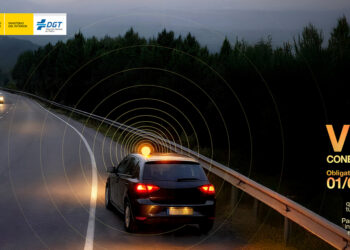Tesla’s Cybertruck, often touted by CEO Elon Musk as a technological marvel and one of the safest vehicles ever made, is now under intense scrutiny after a second fatal crash involving the futuristic electric pickup. The incident, which occurred in Piedmont, California, claimed the lives of three young college sophomores and left a fourth critically injured. This marks the second time a Cybertruck crash has resulted in a catastrophic fire, raising serious questions about the safety of Tesla’s highly anticipated vehicle.
Deadly Flames and Shocking Wreckage
On Wednesday night, the Cybertruck reportedly lost control while speeding, according to the Piedmont Police Department. After hitting a curb, the truck slammed into a cement wall before getting wedged between the wall and a tree. What followed was a horrifying inferno that engulfed the vehicle, making rescue attempts nearly impossible. The sole survivor was pulled from the wreckage with severe injuries.
The victims, all recent graduates of Piedmont High School and now college sophomores, were remembered by friends and family as bright young individuals. Meanwhile, the California Highway Patrol has seized the wrecked vehicle to investigate possible mechanical failures that could have contributed to the tragic accident.
NHTSA Steps In Amid Mounting Cybertruck Concerns
This latest crash has captured the attention of the National Highway Traffic Safety Administration (NHTSA), which confirmed it is collecting data from Tesla and law enforcement. The agency is particularly interested in whether Tesla’s Full Self-Driving (FSD) feature was active during the crash. While it remains unclear whether driver assistance systems were engaged, the Cybertruck is among Tesla’s models equipped with advanced autonomy features.
The crash follows a similarly tragic incident in August, where another Cybertruck erupted into flames after hitting a concrete culvert. The severity of that fire made it impossible to identify the driver due to extensive burns. These repeated incidents have cast a shadow over Tesla’s safety claims and prompted closer scrutiny from regulators.
Cybertruck’s Troubling Safety Record
The Cybertruck, despite being marketed as “built like a tank,” has faced a string of safety issues since its launch. It has already become Tesla’s most-recalled vehicle in 2024, with six recalls in its short lifespan. Most recently, a defective drive inverter led to a loss of propulsion, potentially causing crashes. Furthermore, the NHTSA has opened three separate investigations into the Cybertruck, including its self-driving capabilities, which have been implicated in four reported crashes where the vehicle allegedly failed to respond properly to reduced roadway visibility.
With 19 complaints already lodged against the Cybertruck and a growing number of recalls, its safety reputation is being called into question. While Tesla has long emphasized the rigorous safety testing of its vehicles, real-world performance appears to tell a different story.
Musk’s Promises vs. Reality
Elon Musk has repeatedly boasted about the Cybertruck’s unparalleled safety, once calling it “the safest car on Earth.” However, these fiery crashes paint a troubling picture. Experts have noted that while Tesla’s designs prioritize innovation, such as the truck’s stainless-steel exoskeleton, questions remain about whether these bold choices come at the expense of occupant safety in extreme scenarios.
The Cybertruck’s rollout has been far from smooth. As Tesla’s first electric pickup truck, it debuted to massive fanfare but has since been plagued by recalls and performance concerns. Critics argue that the vehicle’s unusual design, coupled with its reliance on unproven FSD technology, might be contributing to its troubling safety record.
Looking Ahead: Will Cybertruck Address Safety Shortcomings?
For Tesla, the stakes couldn’t be higher. With the NHTSA investigation underway, the company faces mounting pressure to address safety concerns head-on. The Piedmont crash, combined with earlier incidents, could result in heightened regulatory scrutiny and potential legal challenges if systemic flaws are identified.
As the electric vehicle market grows more competitive, Tesla must navigate these challenges carefully to maintain consumer trust. The Cybertruck’s bold design and technological advancements captured global attention, but its growing list of safety controversies threatens to overshadow its futuristic appeal.
The NHTSA’s findings in the ongoing investigations will be pivotal, not only for the Cybertruck but for Tesla’s broader ambitions in autonomous and electric vehicle technology. For now, the question remains: Can the Cybertruck deliver on its promises, or will it become a cautionary tale in the race for innovation?









